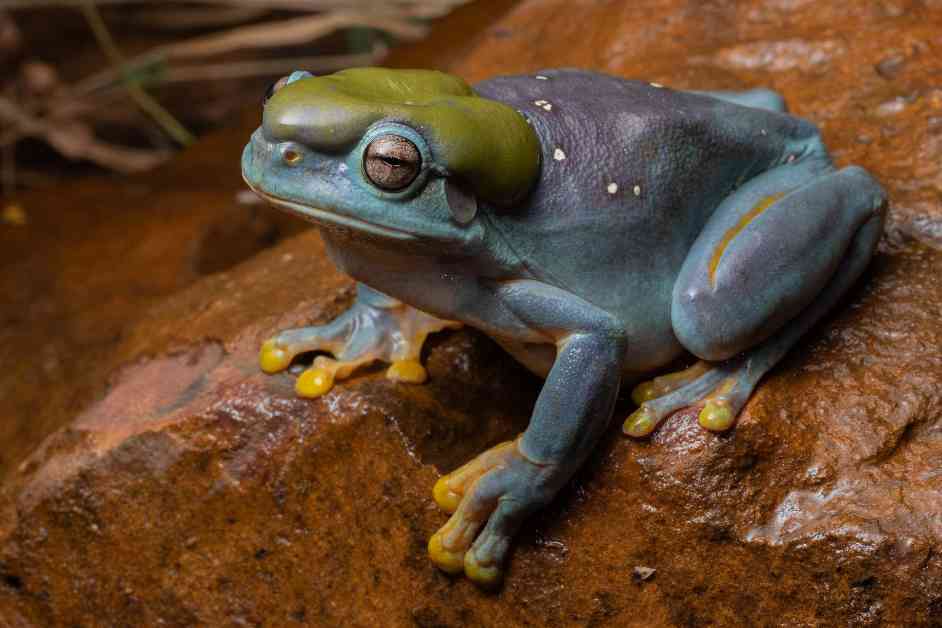A rare blue frog has been discovered in the Kimberley region of Western Australia, leaving researchers astonished. The magnificent tree frog, normally a vibrant green, is believed to have a genetic mutation causing it to lack certain skin pigments, resulting in its unique blue coloring.
Jake Barker from the Australian Wildlife Conservancy’s Charnley River-Artesian Range Wildlife Sanctuary first encountered the blue frog in April and described it as a rare sight. While the frog has been spotted multiple times since then, researchers have decided not to capture it for further study to preserve its natural habitat.
Jodi Rowley from the Australian Museum in Sydney praised the blue frog as one of the most beautiful aberrant-colored frogs she has ever seen. The frog is estimated to be 2 to 3 years old, with a potential lifespan of up to 20 years. The absence of yellow pigments in the blue frog’s skin suggests a mutation that allows the blue color to dominate.
Typically, frog skin color is determined by a combination of melanophores, xanthophores, and iridophores, which produce blacks, browns, yellows, and blues. The absence of yellow pigments in the blue frog’s skin creates its striking blue appearance. While blue may make the frog more visible to predators, researchers believe it has survived in its natural habitat due to its unique coloring.
The discovery of the rare blue frog has sparked interest among conservationists and researchers, shedding light on the fascinating world of genetic mutations in wildlife. This unique frog serves as a reminder of the diverse and extraordinary species that inhabit our planet, and the importance of preserving their natural habitats for future generations to appreciate and study.

